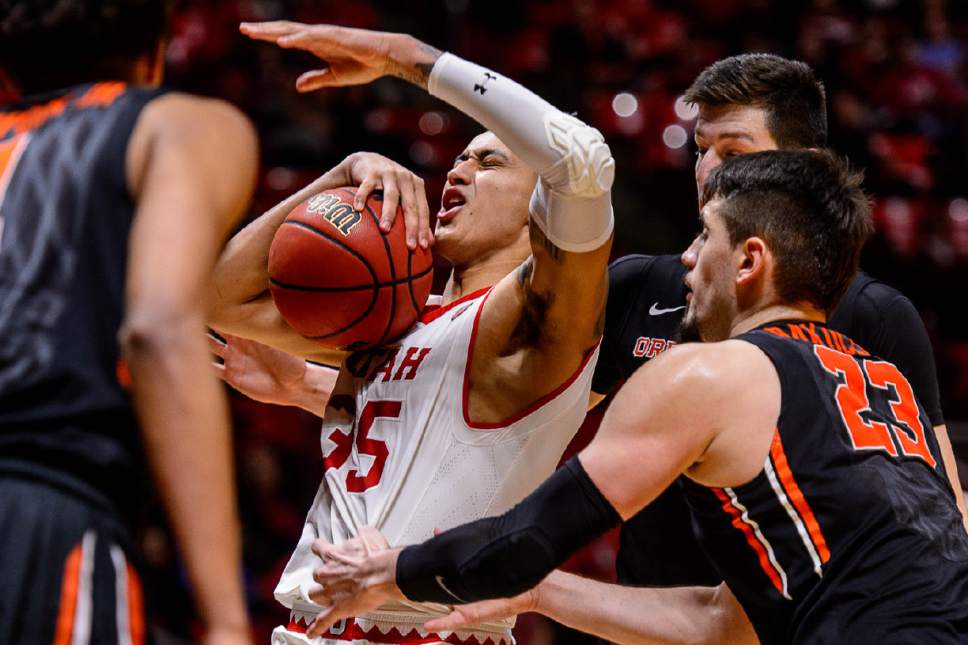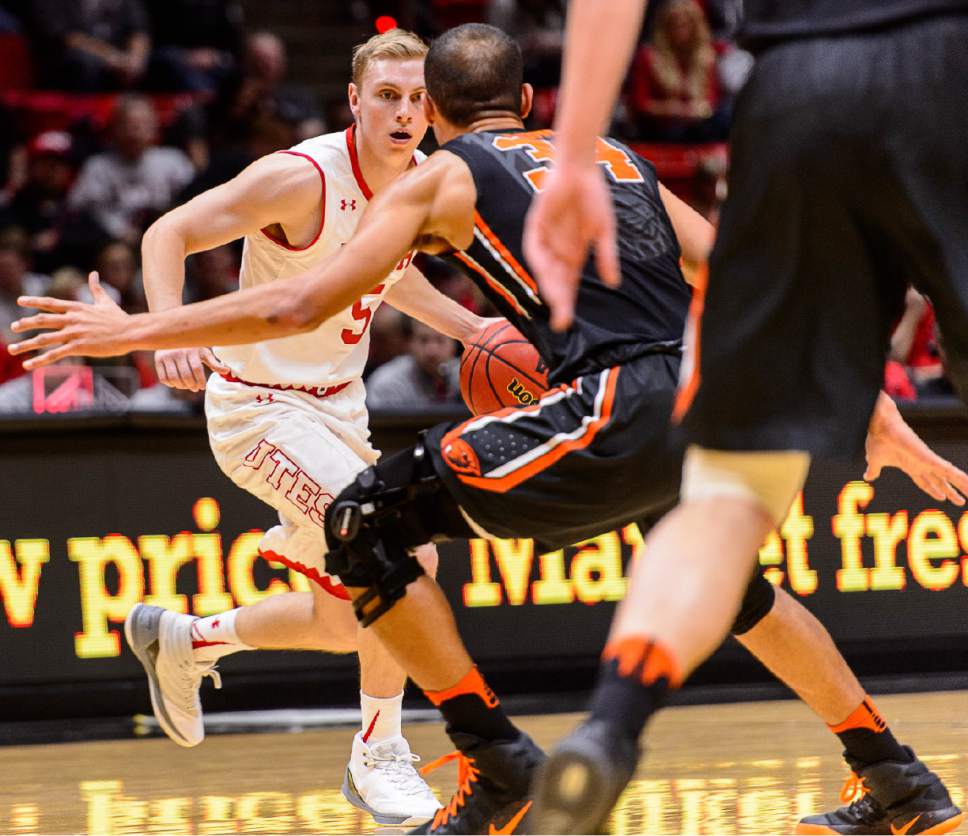This is an archived article that was published on sltrib.com in 2017, and information in the article may be outdated. It is provided only for personal research purposes and may not be reprinted.
Oregon State knew the way to keep a close game in striking distance: Put Utah on the free-throw line.
Trying to close a single-digit lead to one or two possessions, the Beavers fouled Utah's starters Saturday night as they checked in with just over a minute remaining. While the Utes were able to make enough of their foul shots to secure an 86-78 win, a 14-for-26 mark at the line didn't make anyone particularly proud.
"We just need to work on it a lot more in practice," junior guard JoJo Zamora said. "I think we can be a lot better."
In many ways, Utah (15-6, 6-3 Pac-12) has the appearance of an NCAA Tournament-caliber team. Sitting at third place in the Pac-12, the Utes are the third-best shooting team in the country (51.8 percent), 12th in rebounding margin (plus-8.1), and No. 39 in shooting defense (40.4 percent).
But many of the finer details need to be addressed: end-of-game execution, passing efficiently, identifying and staying on post threats. And of course, free-throw shooting.
Those details were less than clean in the two games at home last week. And with a road trip that will take the Utes to Cal and Stanford — where they were swept last year — the little things will be in a larger focus.
"You can only put so many things on a practice plan this time of year," Krystkowiak said of free-throw shooting. "You take your deficiencies and plug in time at practice, and if it is becoming a pattern then we are obviously going to have to practice more."
The Utes have hit 68.2 percent of free throws, ranking No. 216 in the country and ninth in the Pac-12. While many marks have improved during conference play, the free throws haven't: The Utes are only 60.7 percent from the line in conference games, 11th in the league.
Players and coaches said that free-throw shooting is generally better in practices than in games. Krystkowiak suggested he would get "creative" to address it more in practice.
But that's not the only thing Utah is working on: A close loss to Oregon showed that the Utes have to make strides late in games. Close home losses to UCLA and the Ducks this season are particularly painful for a team on the hunt for standout wins on its NCAA resume. In losing by six on Thursday, Utah missed its last four shots of the game.
Krystkowiak said he didn't have a problem with the opportunities his team got against Oregon: a missed lay-up, a fast break stalled by a charge, an open 3-pointer, a blocked putback. But given that Utah had made stops, he was disappointed that they couldn't make Oregon pay for its turnovers.
"It was just matter of us not executing when we needed to," he said. "We did a nice job of getting stops, I liked what we did on that end. But to get back, you have to score a couple times."
Other areas of concern from the week's games include the post defense against Oregon, which had an array of powerful dunks when Utah lost track of Jordan Bell and Chris Boucher. The Utes also had trouble closing gaps on Stephen Thompson (30 points) and JaQuori McLaughlin (22 points) that helped Oregon State get back in it Saturday. Utah's minus-1.1 turnover margin is in the bottom half of the league, with turnovers costing the Utes in the loss to the Ducks.
There's plenty left to work on. Utah will have to devote at least some of their energy to building up weaknesses that could cost them on the road— an already slim shot at an NCAA Tournament may hang in the balance.
Twitter: @kylegoon —
Utah at Cal
P Thursday, 7 p.m. MST TV • Pac-12











